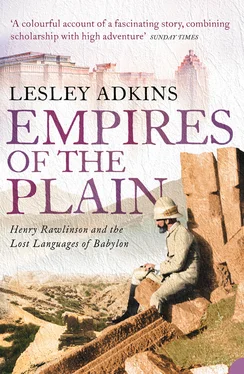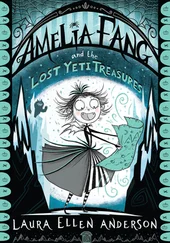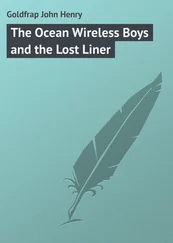The main natural resources of ancient Mesopotamia were clay, silt and mud, as well as bitumen, which seeped to the surface in many areas. Buildings were constructed primarily of bricks manufactured by mixing together mud, straw and water and shaped in wooden moulds, after which they were left to dry hard in the sun, and only rarely baked in a kiln. Mortar was unknown, but mud bricks were bonded together with mud and also bitumen. Bricks were entirely coated with bitumen as a protection against damp when it was necessary to waterproof the foundations of buildings, because such bricks rapidly revert to mud when wet. Even with normal wear and tear, mud bricks gradually turn to dust, so that collapsed buildings would form a layer of soil over which new buildings were constructed. With the accumulation of rubbish and decomposed bricks, mounds (called tells) were formed and have become a distinctive feature of the Mesopotamian landscape.
The Genesis story relates that at Babylon a mud-brick tower – the Tower of Babel – was constructed with the intention of reaching heaven, which incurred the displeasure of God. The story may have been inspired by Babylon’s immense ziggurat known as Etemenanki (‘Foundation of Heaven and Earth’). Like other ziggurats, Etemenanki was a solid stepped pyramid with a monumental exterior staircase and a temple on top. The reason for God’s displeasure is not given in Genesis, but instead of sending another flood, the punishment this time was to disperse the inhabitants of Babylon far and wide and to ‘confuse their language’, 3 so that they spoke different languages and could no longer communicate and cooperate. Because the similar-sounding Hebrew word balal means ‘confuse’ (and therefore a confusion of languages, or babble), the Genesis writer believed that this was why the city was called Babel, but it was actually due to the much earlier name of Babilu , which means ‘gate of the god’. Later on, the ancient Greeks called the city Babylon. The origin of the city’s name had nothing to do with why many languages are spoken throughout the world, but referred to the impressive gates of this fortified city.
The lack of stone and the abundance of mud not only determined building methods in Mesopotamia, but also its very writing system. With no other suitable material for writing, the ubiquitous mud was used to make rectangular, square or occasionally oval tablets. From a ball of damp clay, tablets were flattened into a shape that fitted in the hand, though some could be far larger, and they generally had one convex and one flat side. Writing on the tablet was done with a special implement (stylus) when the clay was still damp, first on the flat side, then the convex side. Styli have not survived as they were made from perishable materials, primarily reeds that grew abundantly in the marshlands: the Babylonian word for a stylus was qan tuppi , ‘tablet-reed’. Writing was not normally done by incising or scoring lines with the stylus, but by making impressions in the damp clay of the tablet, and so it was easier to make straight rather than curved lines. Because one end of the reed stylus was cut at an angle, signs were made up of lines or strokes that had one end wider than the other, displaying a characteristic wedge or tapering shape. The system of writing is known today by the clumsy word ‘cuneiform’, which is literally ‘of wedge-shaped form’, from the Latin word cuneus , meaning wedge. Mistakes were erased by smoothing the clay surface with the stylus; after writing, tablets were left to dry hard in the sun, or occasionally fired in a kiln.
Cuneiform was not a language, but a script or writing system that was used to convey several different spoken languages. In Egypt, hieroglyphic writing was used only to write down the ancient Egyptian language, so hieroglyphs tend to be considered as both a writing system and the ancient language, but cuneiform is more like the later Roman script, which was first used at Rome to write down the Latin language. With modifications, this Roman script has continued to be a writing system for over two thousand years and is used today to write down numerous languages worldwide, such as English, German and Spanish.
Cuneiform is similar to the Roman script in that it too was used for a long period to write down different languages, evolving to suit each language and also evolving over time. For around three thousand years it was the writing system that recorded the many languages spoken across an extensive area, from Iraq to Syria, central Turkey, Palestine and south-west Iran. These languages included Sumerian, Akkadian, Urartian, Elamite and Old Persian. The last known use of cuneiform was in AD 75, on a clay tablet about astronomy found at Babylon. Because the system of cuneiform varied from language to language and changed over time, decipherers had a twofold problem: working out the particular writing system and translating the language in question. With the resulting tangle of multiple languages and varying versions of cuneiform script, decipherment could never be a single landmark achievement. The prize was not the knowledge of a single ancient civilization, but the knowledge of many ancient cultures, and the challenge was too much work for one person – too much for a single lifetime. Those attempting the decipherment of cuneiform had no concept of the enormous task ahead.
The very first writing evolved in Mesopotamia from the need of accountants and bureaucrats to keep a visual check of goods entering and leaving temples and palaces. Small clay tokens dating from 8000 BC appear to have been an early tally system and a precursor of writing. They have various geometric shapes, such as spheres, cones and discs, perhaps representing different commodities. In the mid-fourth millennium BC, tokens were sometimes placed inside hollow clay balls or envelopes and were sealed with cylinder seals.
Used in Mesopotamia for over three thousand years, cylinder seals were invented around 3600 BC as an aid to bureaucracy in the vast city of Uruk in southern Mesopotamia. These seals are small cylinders, usually made of imported stone and carved with intricate designs, especially scenes of everyday life. When rolled across damp clay, they left a continuous impression, and both seals and clay sealings have been found. As well as on clay balls, seals were used on clay tablets and on lumps of clay attached to cords securing door-bolts, bags, sacks, boxes, jars and other containers, as a deterrent against theft. The sealed clay balls may have accompanied deliveries of merchandise (acting as bills of lading), whose contents could be checked by breaking open the balls to reveal the tokens. Some balls have marks on the outside that seem to indicate the number and type of tokens they contained, but this information could also be recorded on flat clay tablets, and the earliest ones – termed numerical tablets – date from 3500 BC and had impressions of tokens and cylinder seals similar to those on the clay balls that they replaced.
The most primitive form of recognizable writing was a book-keeping system done on clay tablets, with simple signs for numbers and pictorial signs (pictographs) to represent what was being counted or listed, such as oxen or barley. At this stage, the wedge-shaped stylus producing distinctive ‘cuneiform’ writing had not come into use. Instead, signs were written with a stylus that had a circular end to make impressions representing numbers and a pointed end to draw linear pictorial signs, and this writing is termed ‘proto-cuneiform’. Tablets with a proto-cuneiform script date to 3300–2900 BC. Since signs were written on damp clay, scribes could only produce stylized sketches rather than the realistic images used in Egyptian hieroglyphs. Two wavy lines, for example, represented water, while the outline of a head of an ox represented an ox. Pictorial signs were also used as ideograms, to represent an associated idea. For example, a picture of a mouth might also mean ‘to speak’. About 1,200 signs are known, but many are not understood today. On the clay tablets, groups of proto-cuneiform signs were written relatively randomly within square or rectangular boxes. The boxes themselves were arranged in horizontal rows that were read from top to bottom and in a right to left direction.
Читать дальше












